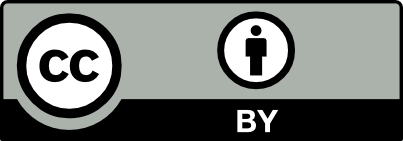Volume 16, Issue 54 (Oct 2006)
J Mazandaran Univ Med Sci 2006, 16(54): 27-34 |
Back to browse issues page
Download citation:
BibTeX | RIS | EndNote | Medlars | ProCite | Reference Manager | RefWorks
Send citation to:



BibTeX | RIS | EndNote | Medlars | ProCite | Reference Manager | RefWorks
Send citation to:
Rafiee B, Riyahi Alam N, Bolori B, Aqabiyan M, Hashemi H, Rahimi S et al . Optimization of brain MRA with contrast injection in 1.5 T field. J Mazandaran Univ Med Sci 2006; 16 (54) :27-34
URL: http://jmums.mazums.ac.ir/article-1-131-en.html
URL: http://jmums.mazums.ac.ir/article-1-131-en.html
Abstract: (16416 Views)
Background and purpose: Selection of suitable parameters for brain MRA requires accurate measures, because the image quality depends on the location of arteries, veins and also the velocity differences of blood, taking into account the low blood flow in small veins and arteries, use of paramagnetic contrast media is recommended. Hence, in present study, we investigated the imaging optimization of brain vessels using contrast media in 1.5 T field.
Materials and Methods: For image optimization blood T1 was estimated after the injection of 0.1mmol/kg of Gd-DTPA and the relative blood signals were measured at T1=300, 600, 900 and 1200ms using TR=20ms and TE=7ms parameters. Ernest angle and relative signal increased as the T1 decreased. MRA was obtained in three groups, each including five volunteer patients using parameters TR=20ms, TE=7ms and flip angle 10, 20 & 30 degrees in two series without and during contrast injection. Signals of carotid, M.C.A and thorcolar herofili and SD in air were measured and it was shown that in 20 degrees flip angle, C/N was maximum. At the last stage, three series of MRA, without, during c.i and 15 minutes after c.i where obtained in 20 volunteer patients using parameters TR=20ms, TE=7ms and flip angle 20 degrees and calculated C/N .
Results: After statistical analysis the highest C/N was observed during c.i MRA. Paired t-student test was performed to compare the differences between the C/N ratios. For clinical purposes one vein and two arterles were graded in 5 definite levels.
Conclusion: Results indicated an important effect of paramagnetic contrast media on better observing of small arteries and vein. The best quality was taken during c.i, but in some arteries contrast media did not improve the quality of MRA
Materials and Methods: For image optimization blood T1 was estimated after the injection of 0.1mmol/kg of Gd-DTPA and the relative blood signals were measured at T1=300, 600, 900 and 1200ms using TR=20ms and TE=7ms parameters. Ernest angle and relative signal increased as the T1 decreased. MRA was obtained in three groups, each including five volunteer patients using parameters TR=20ms, TE=7ms and flip angle 10, 20 & 30 degrees in two series without and during contrast injection. Signals of carotid, M.C.A and thorcolar herofili and SD in air were measured and it was shown that in 20 degrees flip angle, C/N was maximum. At the last stage, three series of MRA, without, during c.i and 15 minutes after c.i where obtained in 20 volunteer patients using parameters TR=20ms, TE=7ms and flip angle 20 degrees and calculated C/N .
Results: After statistical analysis the highest C/N was observed during c.i MRA. Paired t-student test was performed to compare the differences between the C/N ratios. For clinical purposes one vein and two arterles were graded in 5 definite levels.
Conclusion: Results indicated an important effect of paramagnetic contrast media on better observing of small arteries and vein. The best quality was taken during c.i, but in some arteries contrast media did not improve the quality of MRA
Type of Study: Research(Original) |
| Rights and permissions | |
 |
This work is licensed under a Creative Commons Attribution-NonCommercial 4.0 International License. |






